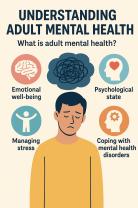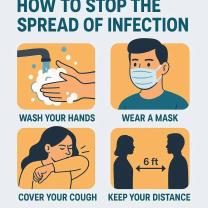What are the best tips for a safe work environment?
Creating a safe work environment is crucial for the well-being of employees and the overall success of an organization. Here are some top tips for ensuring workplace safety:
Establish a Safety Culture:
- Start at the top: Senior management should demonstrate a commitment to safety, setting an example for all employees.
- Communicate safety values: Clearly communicate the importance of safety to all staff and make it a core part of the organizational culture.
Safety Training:
- Provide comprehensive safety training for all employees, including new hires and temporary workers.
- Ensure employees are trained on equipment, machinery, and safety protocols relevant to their roles.
Regular Inspections:
- Conduct regular safety inspections to identify and address hazards.
- Create a reporting system for employees to report safety concerns or incidents.
Emergency Procedures:
- Develop and communicate emergency procedures for fires, natural disasters, medical emergencies, and other potential incidents.
- Conduct regular drills to ensure employees know how to respond in emergencies.
Proper Equipment and Tools:
- Ensure that all equipment and tools are in good working condition.
- Implement preventive maintenance programs to keep machinery and equipment safe.
Ergonomics:
- Evaluate workstations and equipment to ensure they are ergonomically designed to reduce the risk of musculoskeletal injuries.
- Encourage employees to take breaks and practice good posture.
Personal Protective Equipment (PPE):
- Provide appropriate PPE, such as helmets, gloves, goggles, and masks, when necessary.
- Ensure employees are trained in the correct use and maintenance of PPE.
Hazardous Materials:
- Safely store and label hazardous materials, and ensure employees are trained on their handling and disposal.
- Have Material Safety Data Sheets (MSDS) readily available.
Fall Protection:
- Implement fall protection measures for employees working at heights, such as guardrails, safety nets, or personal fall arrest systems.
- Ensure proper training for employees at risk of falling.
Security Measures:
- Implement security measures to protect employees from workplace violence or unauthorized access.
- Develop protocols for reporting suspicious activities.
First Aid and Medical Assistance:
- Provide first aid kits and ensure they are well-stocked and accessible.
- Train designated personnel in first aid and CPR.
Safety Committees:
- Establish safety committees or teams to involve employees in identifying safety issues and developing solutions.
- Encourage employees to actively participate in safety initiatives.
Record Keeping:
- Maintain accurate records of safety training, inspections, incidents, and near-misses.
- Use data to identify trends and areas for improvement.
Continuous Improvement:
- Regularly review and update safety policies and procedures to reflect changing conditions and technologies.
- Encourage feedback from employees and stakeholders for continuous improvement.
Incentives and Recognition:
- Recognize and reward employees for their contributions to workplace safety.
- Create a positive safety culture by celebrating milestones and achievements.
Remember that workplace safety is an ongoing process that requires commitment, communication, and a proactive approach. By implementing these tips and continuously improving safety measures, organizations can create a secure work environment for their employees.












